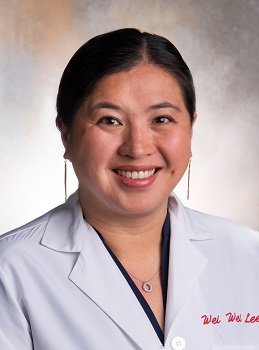Improving trainee well-being vital to medical culture
Three steps can help.
COVID-19 has affected physician mental health in many ways, including an increase in burnout. This reversed a downward trend seen before the pandemic.
In 2017, 44% of physicians in one study reported at least one symptom of burnout, compared with 54% in 2014 and 46% in 2011, according to results published in the September 2019 Mayo Clinic Proceedings. But May to October 2020 found 48% of physicians and 51% of residents reporting burnout, according to results from the Coping with COVID-19 survey published in May 2021 by eClinicalMedicine. They reported anxiety at rates of 25% and 30%, respectively.

These data show the importance of reducing burnout and improving well-being, particularly among trainees, said Wei Wei Lee, MD, MPH, FACP, during her “Wellness of Learners: Teaching Them to Take Care” session at the Society of Hospital Medicine's Converge 2022, held in April in Nashville, Tenn.
“There's a real call to really prioritize physician mental health and well-being as COVID continues to morph and change,” she said. “You could argue it's even put more stress on health care workers as we're trying to deal with the changing public health recommendations.”
The stress of the medical profession is visible in the steady progression of burnout among trainees as they advance in their careers, said Dr. Lee, an associate professor of medicine and associate dean of students at the University of Chicago.
“When students enter medical school, the studies show that when compared to their age-matched peers, they have lower burnout, lower depression, and higher quality-of-life scores,” she said. “And unfortunately, this trend is reversed by their second year of medical school, and these measures of distress increase in residency.”
From there, burnout and work-life balance dissatisfaction peak around midcareer, about 10 to 19 years after residency, noted Dr. Lee. “There is something clearly damaging about the tunnel that we have created for medical education.”
To help make the tunnel of training less damaging and improve trainee well-being, she offered three steps.
1. Recognize physician well-being as a priority.
Health care organizations should embrace the quadruple aim by formally integrating improved clinician experience into the triple aim of better outcomes, improved patient experience, and lower costs, Dr. Lee said. Several professional organizations, such as the Association of American Medical Colleges and Accreditation Council for Graduate Medical Education (ACGME), have issued recommendations to help address well-being at both the trainee and faculty levels, she noted.
“The time to act for academic medical centers really is now,” Dr. Lee said. “And also in whatever setting you're in, we are all leaders and have the ability to think about the change that we can enact in the circles that we practice in.”
2. Build structures to address well-being.
She noted that the culture in medical education is starting to shift. “When I was a medical student and an internal medicine resident in New York City, there was no wellness committee, there was no talk of physician burnout or well-being,” said Dr. Lee. “We have come a long way in recognizing that this is a real issue that we need to think about as a profession. It's a real threat, I think, to the work that we do and the meaning that we find in our careers.”
These days, most medical schools have wellness programs. Dr. Lee and her research team surveyed 97 schools in the U.S. and Canada and found a formal wellness program at 93%, according to results published in the May 2021 Academic Medicine. However, while most of the schools had adequate preventative, reactive, and cultural programming, most respondents reported too little programming around structural and curricular initiatives. “The structural piece is where we're all, I think, still struggling,” Dr. Lee said.
It's less clear how residencies are supporting wellness, she noted. “With ACGME regulations, all that has been built in their expectations for residency programs,” Dr. Lee said. “But how that has been operationalized for our trainees, I think the data and the research are still lagging a little bit there.”
Improving well-being relies most on an organization's culture and work environment, not its individual clinicians, she said. Drivers of both burnout and high professional fulfillment fall into three categories: a culture of wellness, efficiency of practice, and personal resilience, according to a model of physician well-being published in August 2017 by NEJM Catalyst Innovations in Care Delivery.
“You'll notice that that self-care piece, that personal resilience, is the smallest part of this pie,” she said. “We really need to think about implementing and thinking about cultural well-being and efficiency of practice to really be able to make a step towards addressing these issues for our trainees and for ourselves in our learning and work environments.”
3. Address medical culture.
Burnout is a state of vital exhaustion that results from chronic workplace stress, and medical culture is partly to blame, Dr. Lee said. “We all know that in the culture that we operate and work in and train our students and residents in, there are things that are incredibly problematic.”
These negative aspects include hierarchical structures with low tolerance for failure or vulnerability, stigma around mental health care, and the idea that patients' needs should always trump clinicians' well-being, she noted. While individual physicians cannot change the culture of their health systems overnight, they can start to create change on a micro level by acknowledging the mixed messages about well-being their trainees receive, Dr. Lee said.
“If you are feeling ill, sometimes we say, ‘I'm glad you came in and prioritized your patients,’ right?” she said. “So if it's important to take care of yourself and stay at home if you're unwell, are you going to be viewed as lazy or weak or putting that burden onto another colleague who's already overburdened?”
There's also the illusion of physicians “having it all together,” leading them to avoid discussing challenges in work-life integration, including issues they face starting a family or finding child care, Dr. Lee said. This culture, in turn, may send trainees the message that they need to be focused on work at all times.
“Responding to emails at night, while you're on vacation, on weekends really sets the example that you might need to always be ‘on,’” she said. “I think it's OK to respond to emails and messages while you're away, but I think you should be explicit that that's not your expectation of the learners or others who are reaching out to you.”
In order to address these mixed messages, physicians' words and actions, as well as medical systems and curricula more broadly, must align with messages from leadership, said Dr. Lee, citing a perspective piece she cowrote, published in March 2019 by the Journal of General Internal Medicine. “Until such time as our actions match our messages, the intended goals of wellness training will go unrealized,” the paper said.




